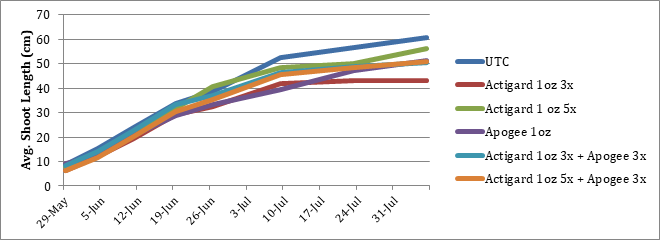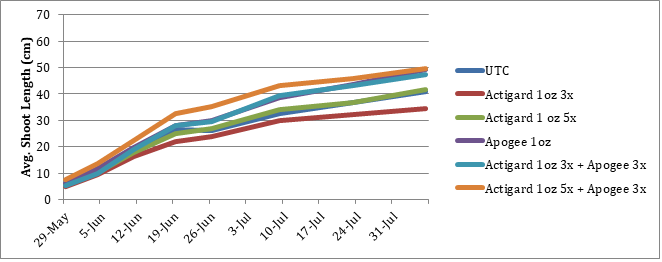Actigard/Apogee for Apple Shoot Growth Inhibition or Enhancement for Fireblight Control
Project goal: To determine if plant growth regulators, Actigard and Apogee, can be used in combination or alone to control fireblight in apple.
Project description: During establishment of high-density apple plantings, trees are often pushed to reach the top of the trellis wire by year two. Vigorous growth can be impacted by the bacterial disease fireblight under warm, wet conditions during bloom. If a shoot is infected, the disease can quickly spread to the trunk of a high-density tree due to its smaller structure and potentially kill the tree. As Michigan growers are moving away from traditional orchards to more high-density systems this disease has had a greater impact. Two plant growth regulators have been shown to suppress fireblight in different ways. Actigard suppresses fireblight by its SAR stimulus on the apple plant and Apogee is known to suppress fireblight by reducing shoot growth. This project looked at using Actigard and Apogee alone at different rates, but also in conjunction with each other at different rates and timings to help understand the impact on fireblight control in high density Honeycrisp and Gala trees. The following treatments were tested:
|
Treatment |
Apps |
Rate (ppm) |
Total Seasonal Rate |
Pink |
Petal Fall |
10 mm |
2 wks later |
2 wks later |
|
UTC |
|
|
|
|
|
|
|
|
|
Actigard 1oz/100gal |
3 |
1 oz |
3 oz |
X |
X |
X |
|
|
|
Actigard 1oz/100gal |
5 |
1 oz |
5 oz |
X |
X |
X |
X |
X |
|
Apogee 1oz/100gal |
3 |
1 oz |
3 oz |
x |
x |
x |
|
|
|
Actigard 1oz 3x + Apogee 1oz 3x |
3 |
1 oz |
3 oz + 3 oz |
x |
x |
x |
|
|
|
Actigard 1oz 5x + Apogee 1oz 3x |
5 |
1 oz |
5 oz + 3 oz |
x |
x |
x |
actigard only |
actigard only |
 Figure 1. Results for average shoot growth in Honeycrisp treated with Actigard and Apogee combinations.
Figure 1. Results for average shoot growth in Honeycrisp treated with Actigard and Apogee combinations.

Figure 2. Results for average shoot growth in Gala treated with Actigard and Apogee combinations.
Project lead/collaborators: Nikki Rothwell and Phil Schwallier
Funding sources: NWMHR Foundation funds
Start year: 2018
End year: 2019



 Print
Print Email
Email